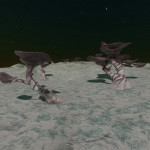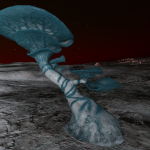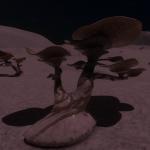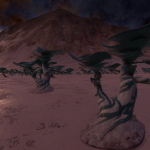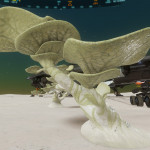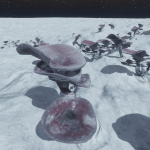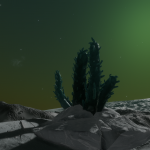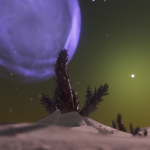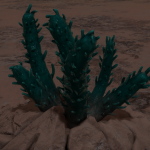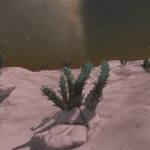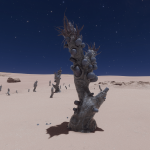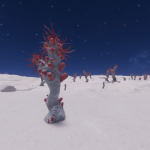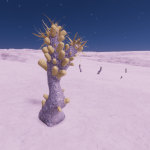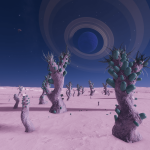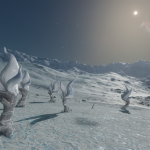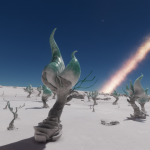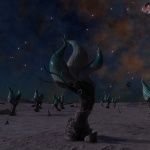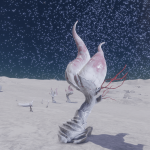Fonticulua genus
Description
Photosynthetic colony organisms found exclusively on ice worlds, where they have embraced the surrounding frozen material as a form of protection. As the fonticulus develop they melt ice from around them, absorbing the liquid through tiny cellular pores and passing it to the colony’s reproductive edge. Here the liquid is excreted and immediately refreezes, creating hard translucent exoskeletons that provide protection for the organisms. Frond structures create a wide flat space that expose internal photosynthetic cells to as much light as possible. Reproduction appears to occur by colony division, most likely when a shard of the structure collapses under its own weight and the smaller shard creates a new colony.
Minimum distance between two genetic samples: 500 m
Conditions of occurrence
- Planets with thin atmosphere
- Icy or Rocky Ice planets
- Maximum gravity: 0.27
| Atmophere type | Species |
|---|---|
| Neon, Neon-rich | Fonticulua segmentatus |
| Methane, Methane-rich | Fonticulua digitos |
| Argon | Fonticulua Campestris |
| Argon-rich | Fonticulua upupam |
| Nitrogen | Fonticulua lapida |
| Oxygen | Fonticulua Fluctus |
Colored variants
Colored variant determined by the parent star type
| Star type | Color |
|---|---|
| O | |
| B | Lime |
| A | Green |
| F | Yellow |
| G | Teal |
| K | Emerald |
| M | Amethyst |
| L | Mauve |
| T | Orange |
| TTS | Red |
| Y | Ocher |
| W | |
| D | Turquoise |
| N | Sage |
| Ae/Be | Maroon |
Fonticulua Campestris
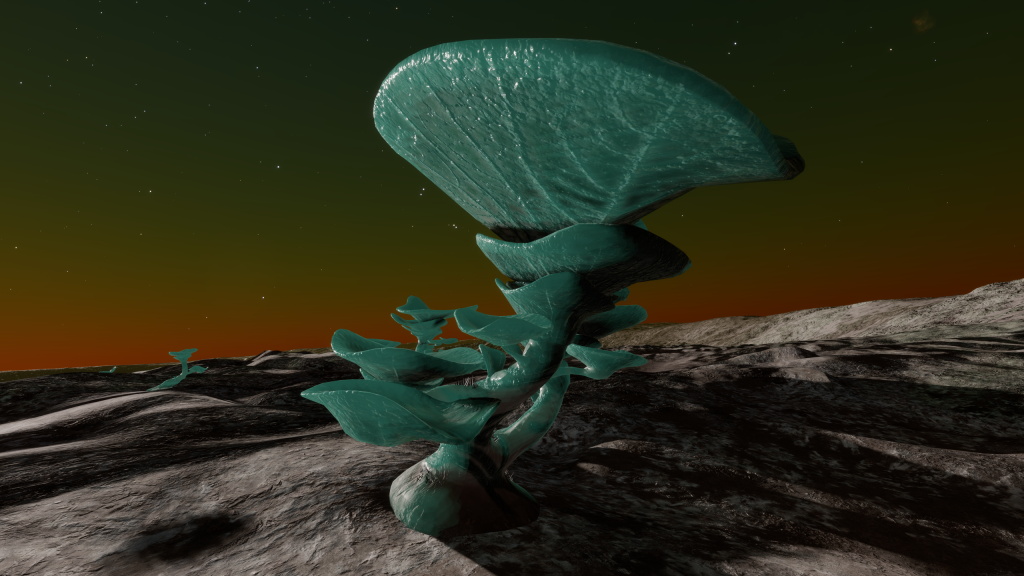
Description
These fonticulua thrive in argon atmospheres, and can reach four metres in height. They feature huge leaf-like structures to capture sunlight for conversion to energy.
Conditions of occurrence
- Planets with thin Argon atmosphere
- Icy or Rocky Ice planets
- Maximum gravity: 0.27
Colored variants
Colored variant determined by the parent star type (see above, genus Fonticulua)
Fonticulua digitos
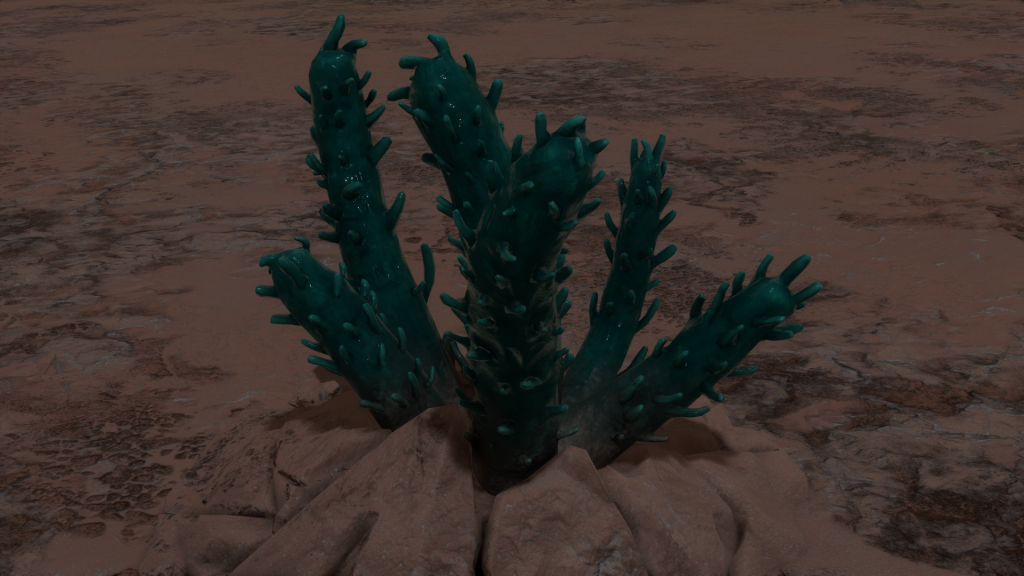
Description
A fonticulua species that thrives in methane—based atmospheres, sprouting a cluster of cylindrical tubes directly from the ice.
Conditions of occurrence
- Planets with thin Methane or Methane rich atmosphere
- Icy or Rocky Ice planets
- Maximum gravity: 0.27
Colored variants
Colored variant determined by the parent star type (see above, genus Fonticulua)
Fonticulua Fluctus
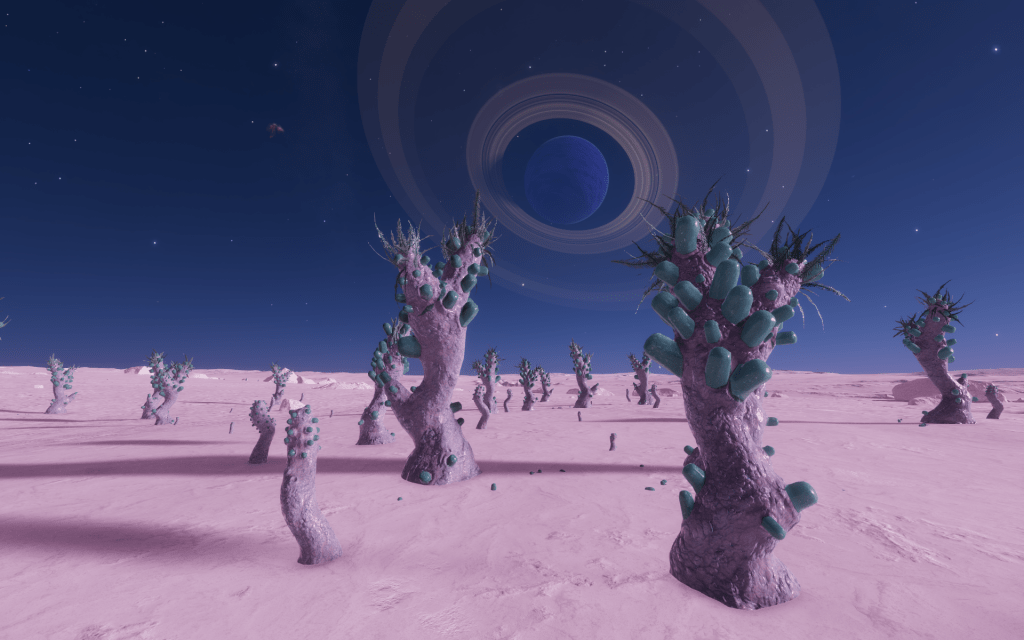
Description
A species of fonticulua that exists on worlds with oxygen atmospheres. They produce coiling wave-shaped structures which tilt toward sunlight.
Conditions of occurrence
- Planet with thin Oxygen atmosphere
- Icy or Rocky Ice planets
- Maximum gravity: 0.27
Colored variants
Colored variant determined by the parent star type (see above, genus Fonticulua)
Fonticulua lapida
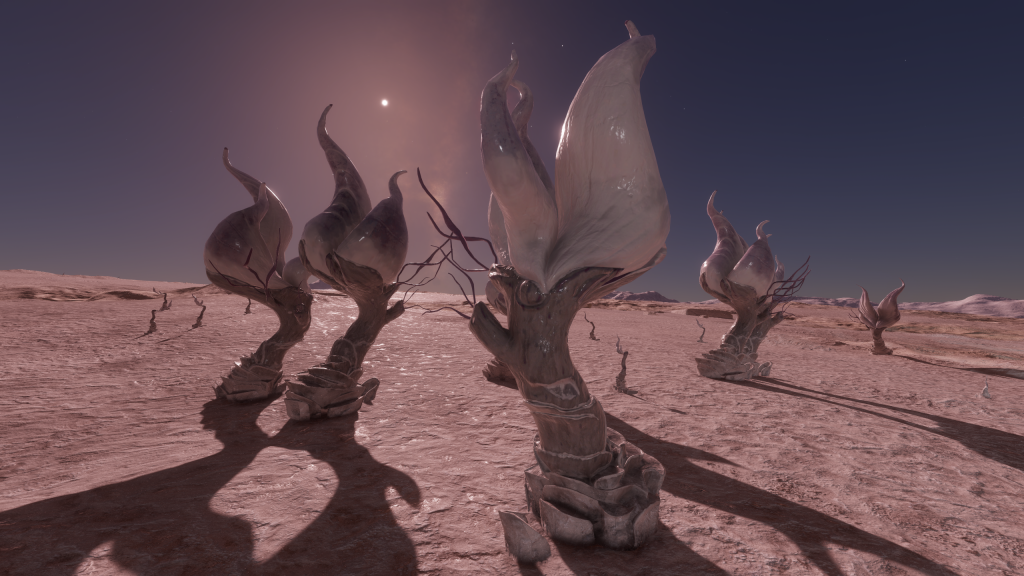
Description
A fonticulua species that exists in atmospheres with a heavy concentration of nitrogen. Growing up along the main stalk are bright gem-like pods. which can break off and create new colonies.
Conditions of occurrence
- Planet with thin Nitrogen atmosphere
- Icy or Rocky Ice planets
- Maximum gravity: 0.27
Colored variants
Colored variant determined by the parent star type (see above, genus Fonticulua)
Fonticulua segmentatus

Description
A species of fonticulua found in atmospheres dominated by neon, appearing as a pyramid—shaped cluster of frilled sections.
Conditions of occurrence
- Planet with thin Neon or Neon-rich atmosphere
- Icy or Rocky Ice planets
- Maximum gravity: 0.27
Colored variants
Colored variant determined by the parent star type (see above, genus Fonticulua)
Fonticulua upupam

Description
This fonticulua species can he found on ice worlds with argon-rich atmospheres. They produce broad hoop-shaped structures to better reflect weak sunlight onto themselves for photosynthesis.
Conditions of occurrence
- Planet with thin Argon-rich atmosphere
- Icy or Rocky Ice planets
- Maximum gravity: 0.27
Colored variants
Colored variant determined by the parent star type (see above, genus Fonticulua)


